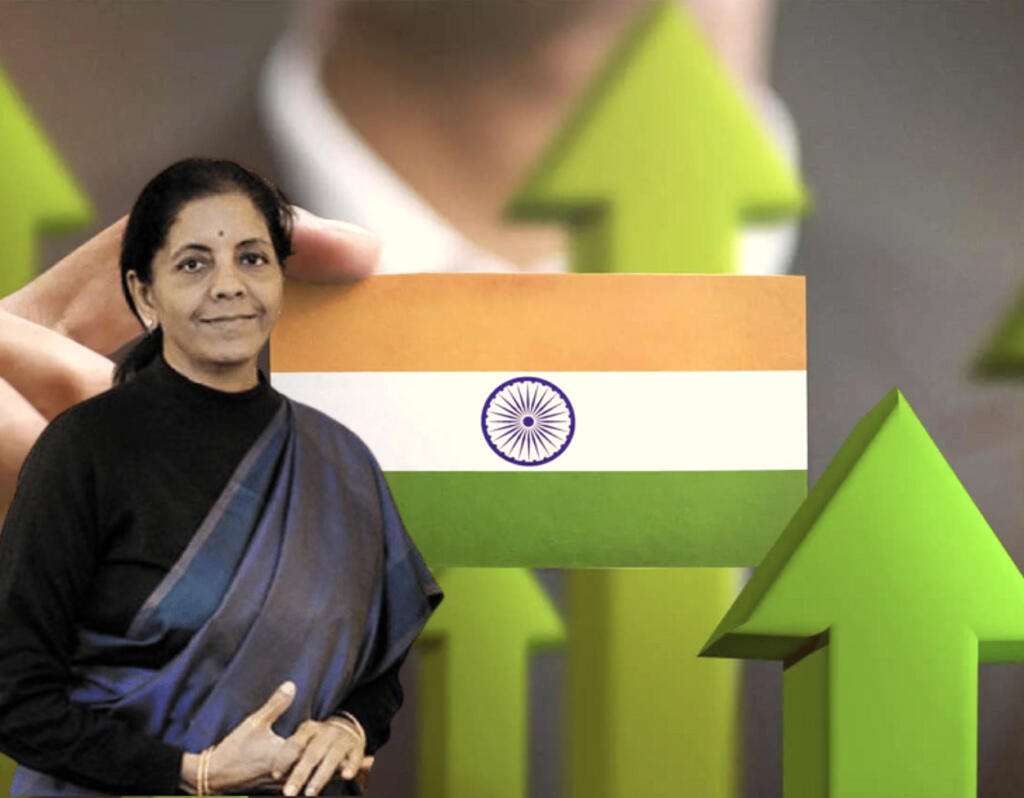India’s Goods and Service Tax (GST) revenue collection breached new heights in October as it stood at Rs 1,30,127 crore- the second-highest revenue collection, ever since the taxation system was introduced. The revenues for October are 24 per cent higher than the GST revenues in the same month last year and 36 per cent more than 2019-20.
Of the Rs 1,30,127 crore collected, Central GST makes up for Rs 3,861 crore, State GST makes up for Rs 30,421 crore, IGST makes up for is Rs 67,361 crore (including Rs 32,998 crore collected on import of goods) while Cess makes up for Rs 8,484 crore (including Rs 699 crore collected on import of goods). Buoyed by the numbers, India’s stock market benchmark Sensex was up over 831 points at the time of closing last evening.
Talking about the achievement, Finance Minister Nirmala Sitharaman took to Twitter to share the numbers, “GST collection for October 2021 registered the second-highest since the implementation of GST Rs 1,30,127 crore gross GST revenue collected in October. Revenues… of October 2021 are 24% higher than the GST revenues in the same month last year & 36% over ’19-20.”
GST collection for October 2021 registered the second highest since implementation of GST
₹ 1,30,127 crore gross GST revenue collected in OctoberRevenues…of October 2021 are 24% higher than the GST revenues in the same month last year& 36% over‘19-20
https://t.co/O8CDBdTbx6— Nirmala Sitharaman (Modi Ka Parivar) (@nsitharaman) November 1, 2021
The Ministry has attributed the record GST collection to increased compliance as both center and state squared off the potential tax-evaders, “The revenues have also been aided due to the efforts of the State and Central tax administration resulting in increased compliance over previous months. In addition to action against individual tax evaders, this has been a result of the multipronged approach followed by the GST Council. On one hand, various measures have been taken to ease compliance like nil filing through SMS, enabling Quarterly Return Monthly Payment (QRMP) system and auto-population of return.”
This indicates that the timely payment of taxes has been increasing over a period of time due to policy measures and administrative efforts.
State-wise, it was Jammu & Kashmir that registered the highest growth. The gross revenue collection grew from Rs 377 crore in the same month last year to Rs 648 crore, suggesting growth of a whopping 72 per cent.
Four consecutive months of Rs 1 lakh crore plus GST revenue collection
GST collection for the country, after posting above Rs 1 lakh crore mark for eight months in a row, had momentarily dipped in June 2021. However, after the lockdowns were lifted in the majority of the states, the collection has breached the 1 lakh crore barrier once again on four consecutive occasions. With the economy opening and the rest of the Covid restrictions being lifted, the figures are expected to increase in the coming months as well. The festival season has helped the revenue collection as well.
However, the revenues could have been far higher if the sales of cars and other products had not been affected on account of disruption in the supply of semiconductors. Ever since the pandemic began, the rise in demand for electrical equipment has led to an increase in the demand for semiconductors.
However, disruption in the supply chain has led to a decrease in the supply of strategic electrical equipment. Usually made of silicon, Semiconductors are a strategic technological asset in today’s globalised world.
From car batteries to laptops to smartphones to household appliances to gaming consoles and everything in between, semiconductors perform the fulcrum of the job in powering smart electronic devices.
Banking sector stabilising
It’s not only at the GST front that India under the Modi government is hurtling through new barriers – the banking sector which forms the bedrock of the economy has been resuscitated as well. As reported by TFI, last month, global credit rating agency Moody’s revised the outlook for the Indian banking sector to stable from negative.
The credit agency added, “We have revised the outlook for the Indian banking system to stable from negative. The deterioration of asset quality since the onset of the coronavirus pandemic has been moderate, and an improving operating environment will support asset quality. Declining credit costs as a result of improving asset quality will lead to improvements in profitability,”
Read More: An NPA-ridden Indian banking sector has been “stabilised” by PM Modi, Moody’s says
GDP to grow, GST collection to touch new heights
Reportedly, the agency believes that aided by a stable banking sector, India’s economy will continue to recover miraculously in the next 12-18 months, with GDP growing 9.3 per cent in the fiscal year ending March 2022 and 7.9 per cent in the following year. Meaning, the GST collection, which just touched its second-highest revenues will hit new highs.
Even after a devastating second wave of the pandemic, the Modi government managed to wade through the testing waters and is now reaping the rewards for it. The record GST collections and stabilising banking sector are indicators that the economy is coming out of the pandemic, rather brilliantly. The best part is that there is still a whole lot of room left for the government to bring its sweeping reforms and clock the new, astronomical numbers.
